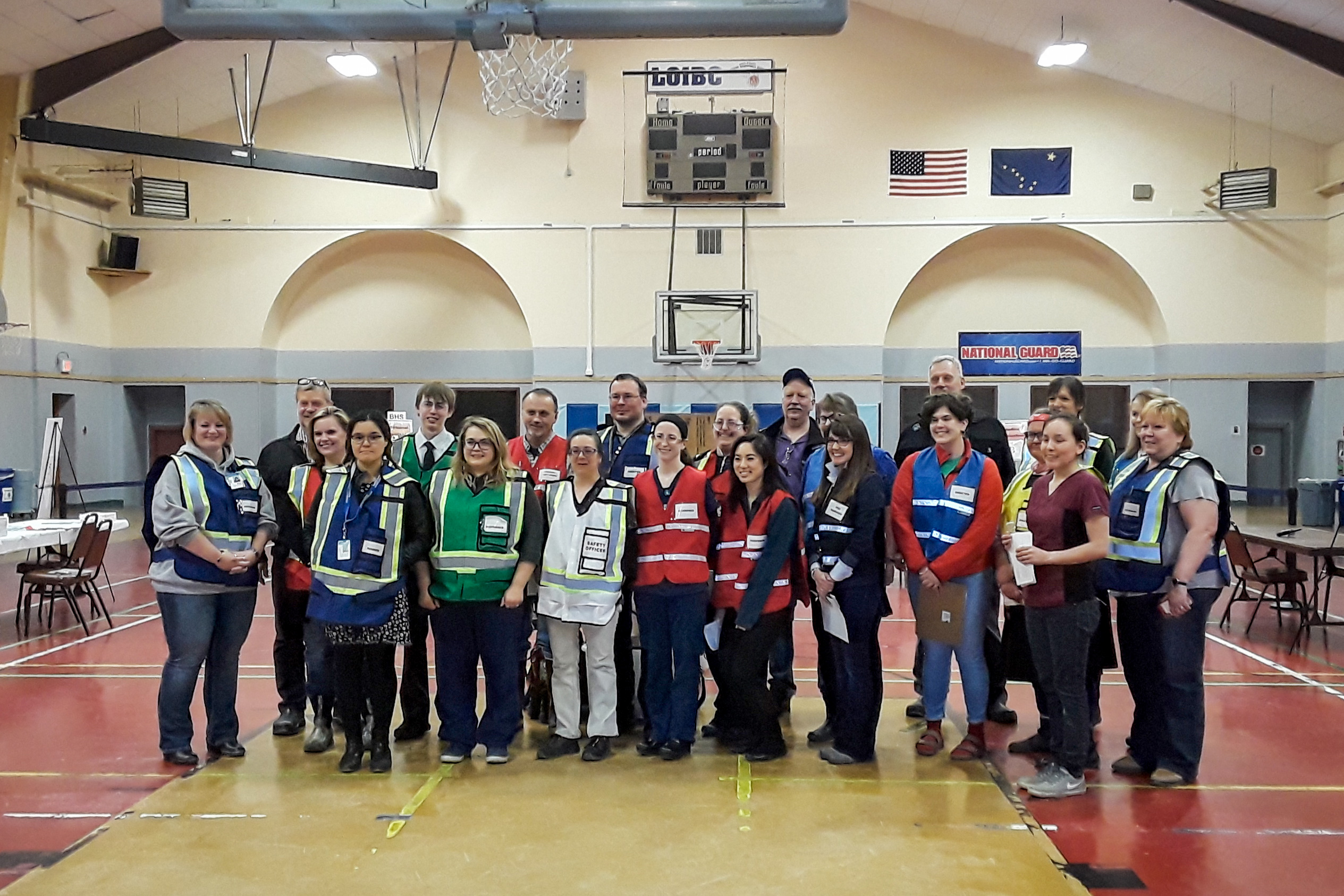What would happen if a virulent, airborne disease hit the isolated villages of rural Alaska? That worst-case scenario was the focus of a statewide exercise this spring, “Ragin’ Contagion,” which included Nome and the KNOM listening community of Shaktoolik.
Public safety and medical officials simulated a mock emergency, considering factors such as how to best quarantine the sick, protect the healthy, stockpile and distribute medicine quickly, and evaluate the extent of the virus’ spread within a remote community.
Western Alaska has several instances of widespread illnesses in its history: the Spanish flu in 1918 and the diphtheria epidemic in 1925, for example. Alaska continues to have the second highest rate of tuberculosis in the nation.
As Nome resident and Ragin’ Contagion participant Charlie Lean told KNOM listeners, when it comes to another epidemic in the region, “it’s not a matter of if it’s going to happen, it’s a matter of when.”
Image at top: The volunteer crew for Nome’s “Ragin’ Contagion” exercise, gathered together in the city’s recreation center. Photo: Davis Hovey, KNOM.






